Warning Letter Template for Late Coming Employees
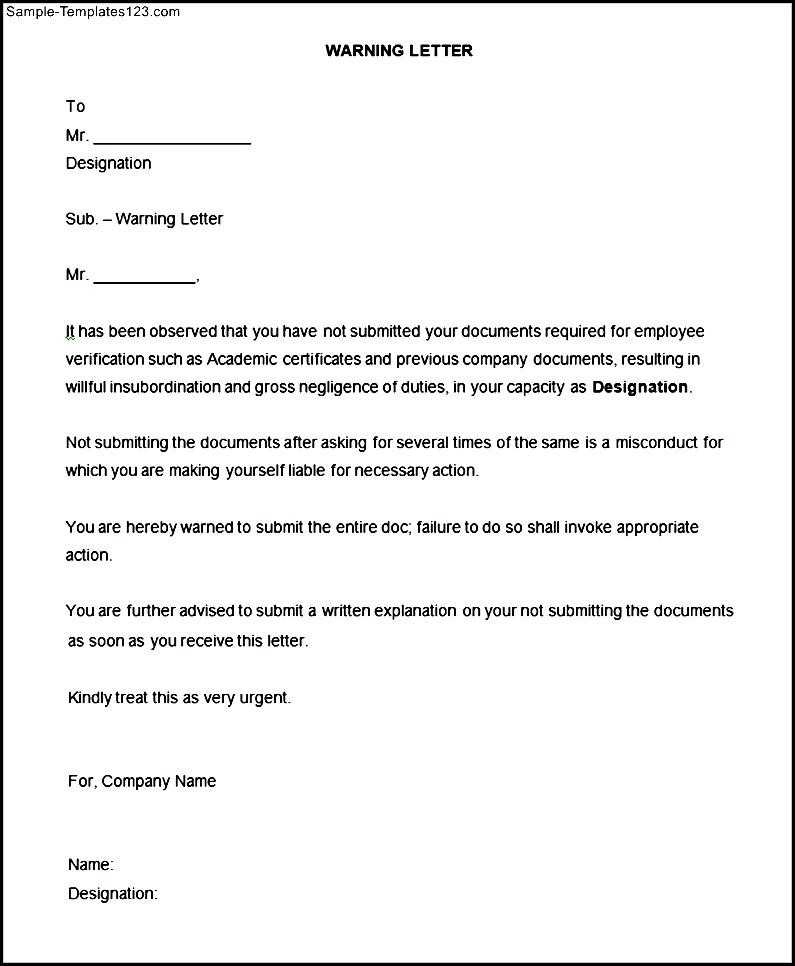
Managing employee behavior is an essential aspect of maintaining a smooth and productive work environment. When an individual consistently fails to adhere to company policies regarding attendance, it can disrupt workflow and affect team dynamics. It is important to address such situations professionally to ensure that the issue is resolved in a constructive manner.
One effective way to address attendance problems is through formal written communication. This method provides a clear record of the issue and conveys the seriousness of the situation. By using proper language and maintaining professionalism, you can set expectations for future conduct and encourage improvement without causing unnecessary conflict.
Clear communication is key when discussing workplace issues. It ensures that the employee understands the gravity of the situation while also offering guidance on how to avoid further issues. A carefully crafted message can help to maintain a positive working relationship and prevent misunderstandings.
Understanding the Importance of Written Notices
Formal written communication plays a crucial role in addressing workplace behavior concerns. It serves as a clear method of conveying issues while maintaining professionalism. Such documents are not only a tool for documenting concerns but also provide an opportunity to set expectations and outline necessary improvements.
By using this approach, employers can ensure that employees are fully aware of the problem and the potential consequences of continued misconduct. This form of communication helps maintain consistency and fairness, as it leaves no room for misunderstanding. Additionally, it emphasizes the importance of punctuality and the impact it has on the team and company as a whole.
Why Addressing Tardiness is Crucial
Dealing with punctuality issues is essential for maintaining a productive and well-functioning workplace. When employees fail to arrive on time, it can have a ripple effect on the entire team, causing delays and disruptions. Addressing these concerns promptly ensures smooth operations and reinforces the importance of adherence to company policies.
Consistent tardiness can lead to various negative consequences, including:
- Reduced team morale, as others may feel burdened by the delay.
- Decreased productivity, as work schedules become disrupted.
- Lowered trust in the employee’s reliability and commitment to the role.
- Increased stress on managers, who must adjust work plans and deadlines.
By addressing this issue early, employers can prevent long-term negative impacts and foster a culture of accountability. Clear communication about expectations helps employees understand their responsibilities and the consequences of continued tardiness.
Steps to Create a Formal Notice
Creating a formal written notice to address employee behavior requires careful consideration and structure. The goal is to communicate the issue clearly, outline expectations, and encourage improvement while maintaining professionalism. Following a systematic approach helps ensure that the message is received appropriately and has the desired impact.
1. Begin with a Clear Introduction
The first step is to identify the reason for the notice and explain the specific issue that needs attention. Be concise and focus on the behavior, not the individual, to avoid sounding personal. This sets the tone for a constructive conversation rather than a confrontation.
2. Outline Expectations and Consequences
Clearly state what is expected of the employee moving forward. Include any guidelines or rules they need to follow to improve. Additionally, mention the potential outcomes if the situation does not improve, ensuring the employee understands the seriousness of the issue.
Being direct and transparent about expectations and consequences helps avoid confusion and sets clear goals for the employee to work towards. It’s important to remain respectful and focus on achieving positive outcomes.
Key Elements to Include in the Written Notice
When addressing attendance issues, it is essential to include specific elements in the communication to ensure clarity and effectiveness. A well-structured message will help convey the seriousness of the matter while also offering the employee an opportunity to improve. The following elements should be present in any formal notice about behavior concerns.
1. Clear Identification of the Issue: The notice should begin by specifying the behavior that is being addressed. Focus on facts, such as the dates or times the employee was absent or delayed, to ensure there is no ambiguity.
2. Professional Tone and Language: It is important to maintain a respectful tone throughout the message. Using polite and neutral language ensures that the communication remains constructive and professional.
3. Expectations Moving Forward: Clearly state the changes that are expected from the employee. Be specific about how punctuality should be improved and what steps the employee should take to avoid further issues.
4. Possible Consequences: Outline the potential consequences of continued delays, ensuring the employee understands the seriousness of the situation. This helps motivate the individual to take the matter seriously.
Effective Language for a Professional Notice
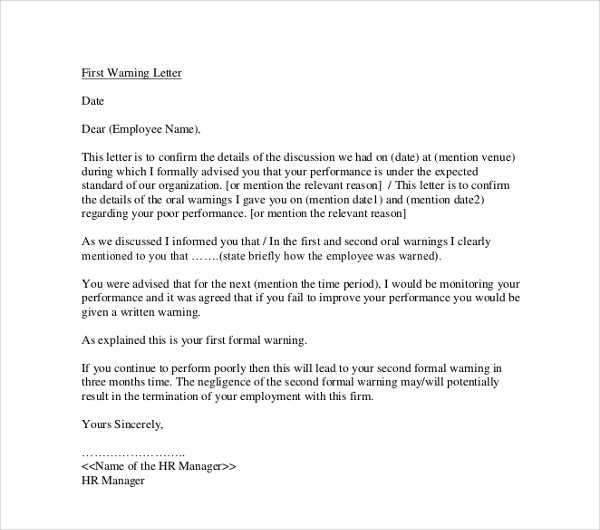
When addressing workplace behavior issues, the language used is crucial in maintaining a professional tone while clearly communicating expectations. The choice of words can significantly impact how the message is received and whether it encourages positive change. A balanced approach, combining firmness with respect, is essential to achieve the desired outcome.
1. Use Neutral and Objective Language
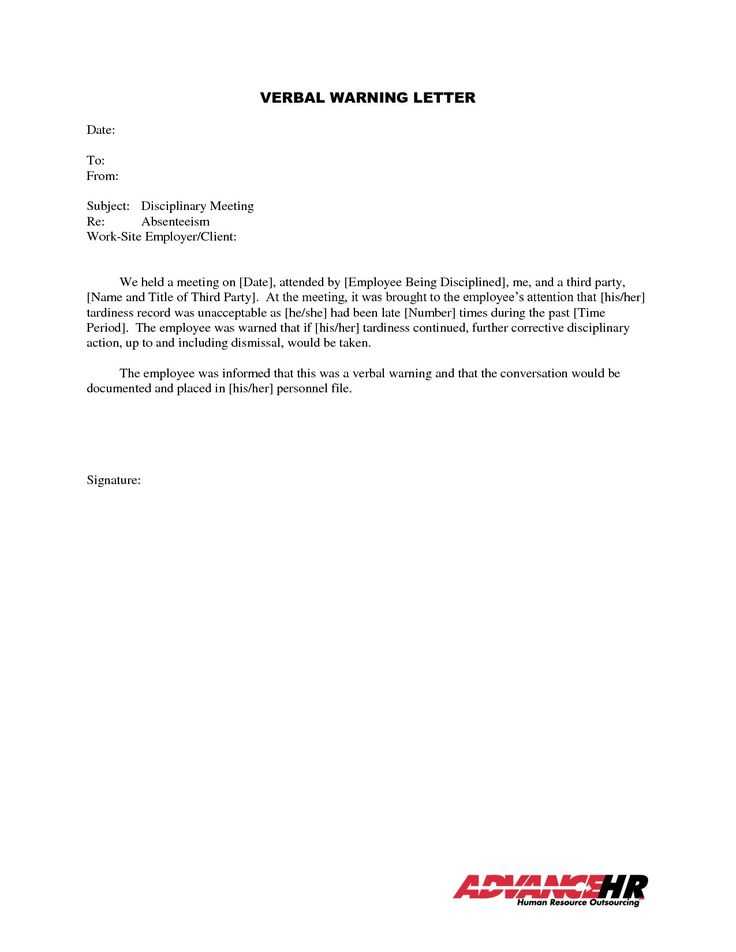
Avoid using accusatory or emotional language. Focus on the facts and describe the issue in a neutral, objective manner. For example, instead of saying “You are always late,” use “There have been multiple instances of delayed arrivals, such as on [dates].” This keeps the conversation focused on the behavior rather than the individual.
2. Be Clear and Direct
Ensure that the expectations are clearly outlined. Avoid ambiguity by specifying what needs to change and by when. Clear instructions help the employee understand exactly what is required to avoid further issues and what consequences may follow if the situation does not improve.
Choosing the right language is vital in preventing misunderstandings and fostering a positive work environment. The tone should be assertive but respectful, reinforcing the importance of adhering to company policies without being confrontational.
How to Maintain a Respectful Tone
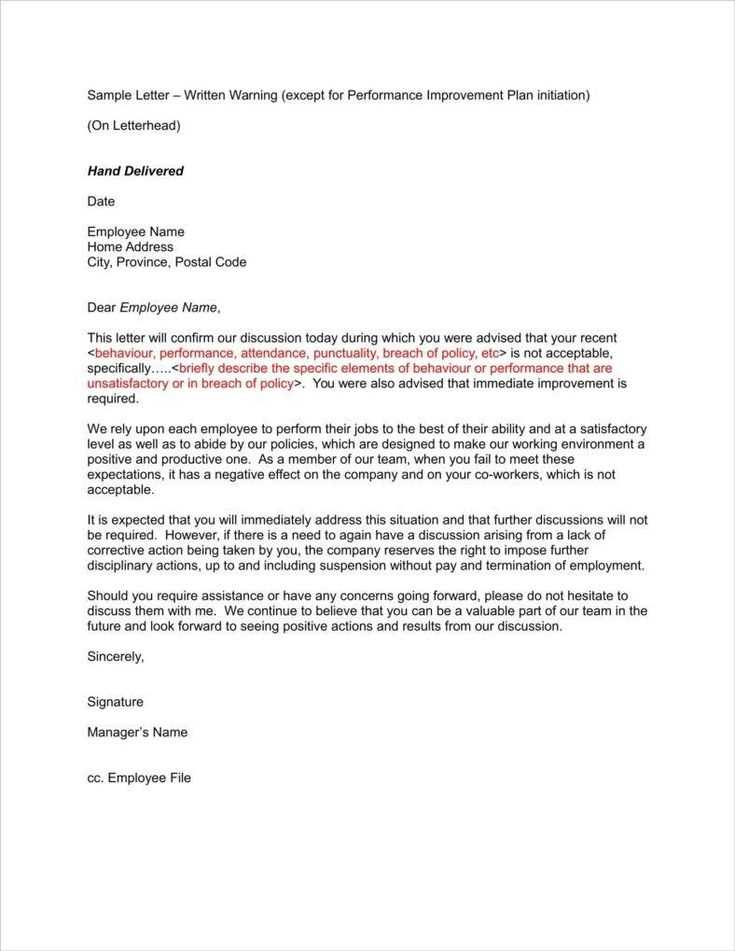
When addressing performance or behavior issues, it is essential to maintain a tone that is both firm and respectful. This approach ensures that the message is clear, while still fostering a professional and positive relationship between employer and employee. The goal is to correct the behavior without creating animosity or resentment.
1. Focus on the Behavior, Not the Person: Instead of targeting the individual, emphasize the specific actions or behaviors that need improvement. This helps prevent the employee from feeling personally attacked and keeps the conversation focused on growth.
2. Use Constructive Language: Phrase the message in a way that encourages improvement. Instead of saying “This is unacceptable,” try using “We would appreciate your efforts in arriving on time moving forward.” This wording emphasizes collaboration and progress.
3. Be Calm and Professional: Keep the tone even and calm throughout the message. Avoid any language that may be perceived as harsh or overly critical. A professional demeanor will help the employee remain open to the feedback provided.
Consequences of Ignoring Attendance Issues
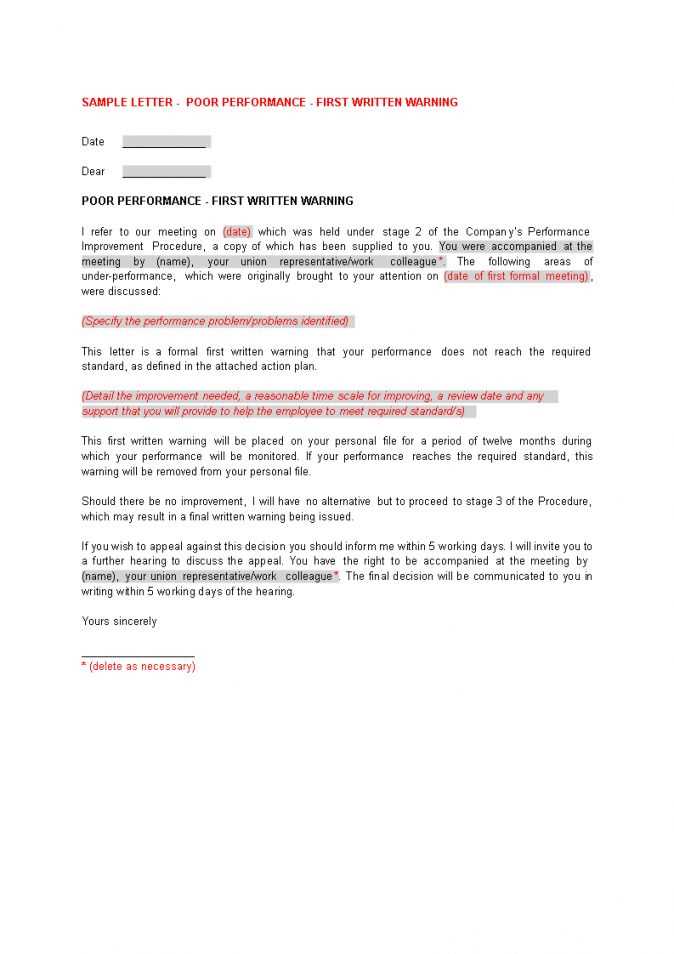
Failing to address attendance problems in a timely and effective manner can have significant repercussions for both the employee and the organization. Unresolved issues can negatively impact productivity, team morale, and overall work performance. It is essential to tackle these concerns before they escalate into larger, more disruptive problems.
1. Impact on Team and Productivity
When one employee consistently fails to meet expected arrival times, it affects the entire team’s workflow. Other team members may have to adjust their schedules or take on additional tasks, leading to frustration and potential burnout.
2. Negative Influence on Company Culture
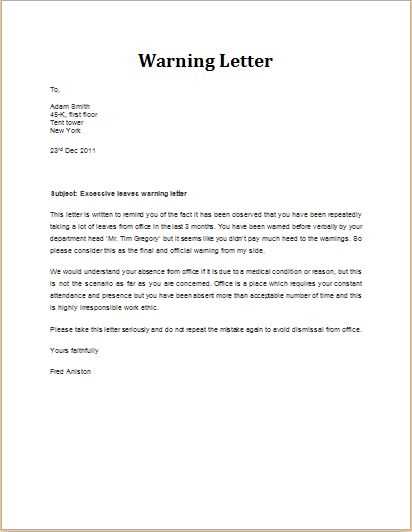
Allowing attendance issues to persist without intervention can create a culture of leniency, where employees feel that punctuality and commitment are not prioritized. This may lead to further behavioral issues and reduced overall morale within the company.
| Consequence | Effect |
|---|---|
| Decreased Productivity | Delays and gaps in staffing disrupt workflow and efficiency. |
| Increased Employee Frustration | Other team members may feel overburdened and demotivated. |
| Lowered Employee Morale | Persistent issues can lead to disengagement and negative attitudes. |
| Damaged Company Reputation | Ongoing behavior problems can affect the company’s professional image. |
Addressing attendance issues early prevents these negative outcomes and helps maintain a productive and positive work environment for everyone involved.
Impact on Workplace Productivity and Morale
Consistency in employee attendance plays a vital role in maintaining high productivity and fostering a positive workplace environment. When employees fail to adhere to expected schedules, it can disrupt the overall workflow, causing delays and added stress for colleagues. Over time, this can create a ripple effect, damaging both team morale and efficiency.
1. Decreased Efficiency and Delays
When employees do not adhere to agreed-upon working hours, it results in interruptions and slowdowns in operations. The absence of a team member often forces others to adjust their responsibilities or complete additional tasks, ultimately reducing overall output.
2. Lowered Team Morale
Consistent disruptions due to poor attendance can lead to frustration among employees. When one individual’s behavior creates extra work for others, it can negatively impact team spirit. Over time, resentment builds, leading to disengagement and a lack of enthusiasm for team projects.
- Frustration: Other employees may feel irritated by the added workload, leading to decreased job satisfaction.
- Reduced Collaboration: Poor attendance can hinder the collaborative environment, making it harder for teams to work effectively together.
- Increased Stress: Employees who take on additional work may experience burnout, further reducing productivity.
In summary, unresolved attendance issues can severely impact both productivity and team dynamics. Addressing the problem early is crucial in preventing further disruption and maintaining a positive work environment.